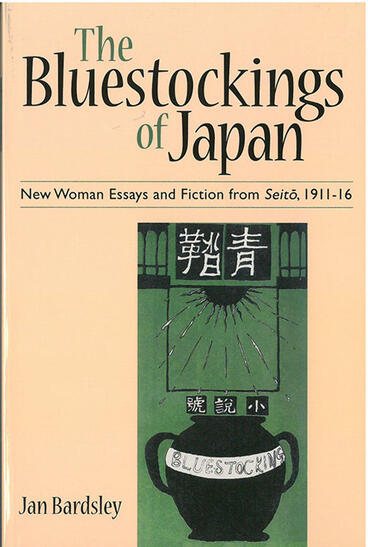The Bluestockings of Japan
New Woman Essays and Fiction from Seito, 1911–16
Introduces English-language readers to a formative chapter in the history of Japanese feminism by presenting for the first time in English translation a collection of writings from Seitō (Bluestockings), the famed New Women’s journal of the 1910s
Description
The Bluestockings of Japan introduces English-language readers to a formative chapter in the history of Japanese feminism by presenting for the first time in English translation a collection of writings from Seitō (Bluestockings), the famed New Women’s journal of the 1910s. Launched in 1911 as a venue for women’s literary expression and replete with poetry, essays, plays, and stories, Seitō soon earned the disapproval of civic leaders, educators, and even prominent women’s rights advocates. Journalists joined these leaders in ridiculing the Bluestockings as self-indulgent, literature-loving, sake-drinking, cigarette-smoking tarts who toyed with men. Yet many young women and men delighted in the Bluestockings’ rebellious stance and paid serious attention to their exploration of the Woman Question, their calls for women’s independence, and their debates on women’s work, sexuality, and identity. Hundreds read the journal and many women felt inspired to contribute their own essays and stories. The seventeen Seitō pieces collected here represent some of the journal’s most controversial writing; four of these publications provoked either a strong reprimand or an outright ban on an entire issue by government censors. All consider topics important in debates on feminism to this day such as sexual harassment, abortion, romantic love and sexuality, motherhood, and the meaning of gender equality. The Bluestockings of Japan shows that as much as these writers longed to be New Women immersed in the world of art and philosophy, they were also real women who had to negotiate careers, motherhood, romantic relationships, and an unexpected notoriety. Their stories, essays, and poetry document that journey, highlighting the diversity among these New Women and displaying the vitality of feminist thinking in Japan in the 1910s.
Jan Bardsley is Associate Professor of Japanese Humanities in the Department of Asian Studies at the University of North Carolina at Chapel Hill. With Joanne Hershfield, she is codirector of the 2002 documentary film Women in Japan: Memories of t
Reviews
"The translations are beautifully done, and the book is surely a welcome addition to the project of recovering lost female voices . . . an excellent and indispensable companion to scholarship on Seitô and feminism.”—Reiko Abe Auestad, Monumenta Nipponica
"An invaluable contribution to the scholarship on the Japanese women's movement as well as on Japanese literature. Highly recommended.”—L.I. Winston, Choice
“We can here hear the powerful voices of these brave and defiant women clearly, cutting through a century of accomplishment and of cant. We are here offered a step forward in the history of Japanese women—one that, in English translation, makes possible the inclusion of the Japanese woman's experience into the international context of the woman's movement itself.”—Donald Richie, The Japan Times
“Jan Bardsley’s long-awaited study brilliantly captures the excitement, danger, and occasional disappointments of the New Woman confronted in early twentieth-century Japan. Readers are given an intimate and incisive look into the New Woman’s social and political context, but more than that, through Bardsley’s graceful and at times gritty translations, we are allowed to hear her voice. No examination of women’s history in Japan would be complete without a chapter on Seito. Similarly, no feminist library can be whole without Jan Bardsley’s The Bluestockings of Japan.”
—Rebecca L. Copeland, Professor of Japanese Literature, Washington University in St. Louis
“Bardsley’s excellent translations of declarations, essays, and short stories from Seito allow us to hear Japanese feminist voices from the early twentieth century loud and clear. We feel the energy of the young women activists as they explore their potential as writers, sexual beings, and thinkers. Culling information from a variety of memoirs, histories, and Japanese critical studies, she provides biographical sketches for each of the contributors whose work she translates. This book marks a major step forward in the English-language materials available on the history of Japanese women, and it will facilitate the inclusion of Japanese women’s experience into the international history of the women’s movement.”
—Sally A. Hastings, Associate Professor of History, Purdue University, and Editor, U.S.-Japan Women’s Journal

